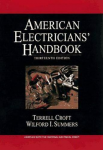jmellc
Senior Member
- Location
- Durham, NC
- Occupation
- Facility Maintenance Tech. Licensed Electrician
You probably haven’t done much service work. Backstabbing is one of the main causes of trouble I have seen. It gets a bad rap because it is a sloppy wiring method.I'm inclined to agree that pigtailing EGCs has more to do with paranoia than reality.
Backstabbing gets a bad rap because it can be done poorly in a number of ways and often is. One of the problems is that it's not a good thing to do in a box that's not very deep because the wires get shoved up against the back of the box and can be moved around when the devices put in place. I've also seen people try and use it with stranded wire which is just a terrible idea or with conductors that have not been stripped to the proper length. What you are calling the back stab is just a terminal that is spring loaded. Spring loaded terminals have been around for a long time and by and large they are as safe as screw-in terminals if handled properly. Personally I don't like wrapping stranded wires around a screw and then tightening the screw down. There's plenty of potential for messing that up too.
Wrapping stranded conductors on a screw is not good either. I don’t have my book handy but I am see code disallows it. Some devices are made to take stranded wire in a clamp. You can pigtail a solid wire in or use fork terminals. I don’t really like that but use forks if I have to.

